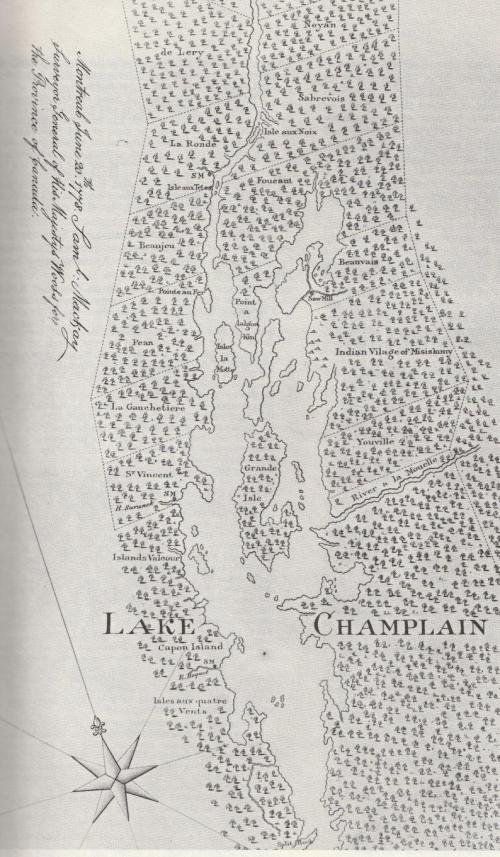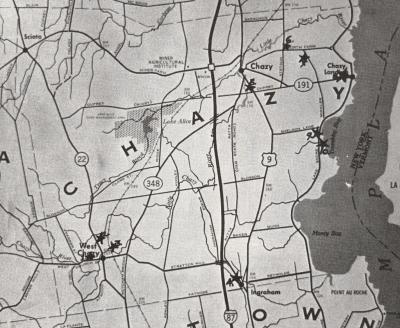by Logan M. Lavallee,
Gardiner Foundation Semiquincentennial Summer Fellow

The area known as Chazy was settled by 1775 and served as a highway between Montreal and New York City. It was part of Charlotte County in the Province of New York. The first white settlers in the area were Jean Baptiste La Framboise and his family in 1763. Joseph Monty and his family arrived between 1773-74, along with Julian Belanger and his family around the same time. At the start of the Revolution, Chazy had a population of three families.
Between 1763 and 1776, Chazy was under British rule, governed by George III. Before the Treaty of Paris in 1763, the area was controlled by the French Crown.
During the campaign of 1776, Chazy became a meeting point for spies, deserters, and informers. After the campaign, the settlement was deserted when the Americans took the three families to Albany as either refugees or prisoners.
All males from the families that settled before the Revolution joined the "Congress's Own" Regiment to fight for the Americans. These men were naturalized on May 11, 1782.
In the winter of 1777, Jacques La Framboise and three other rebels deserted at Mount Independent and joined Philip Williams, an Englishman, heading to Canada near Split Rock.
Resettlement of Chazy began by an unknown person before the summer of 1782. On September 10, 1787, settlers returned to Chazy to claim land provided by the Canadian and Nova Scotia Refugee Tract.
Chazy wasn't officially recognized as a town until it was established from the Town of Champlain by the State Legislature on March 20, 1804.

Biographies of the four earliest settlers of Chazy may be found at following links:
Jean Baptiste (Lafoy) La Framboise (~1720 to ~1810)
Jacques (Lafoy) La Framboise (1751 to 1832)
Francois Amable Monty (1736 to 1809)
Julian Victor Belanger (1752 to ~1831)
